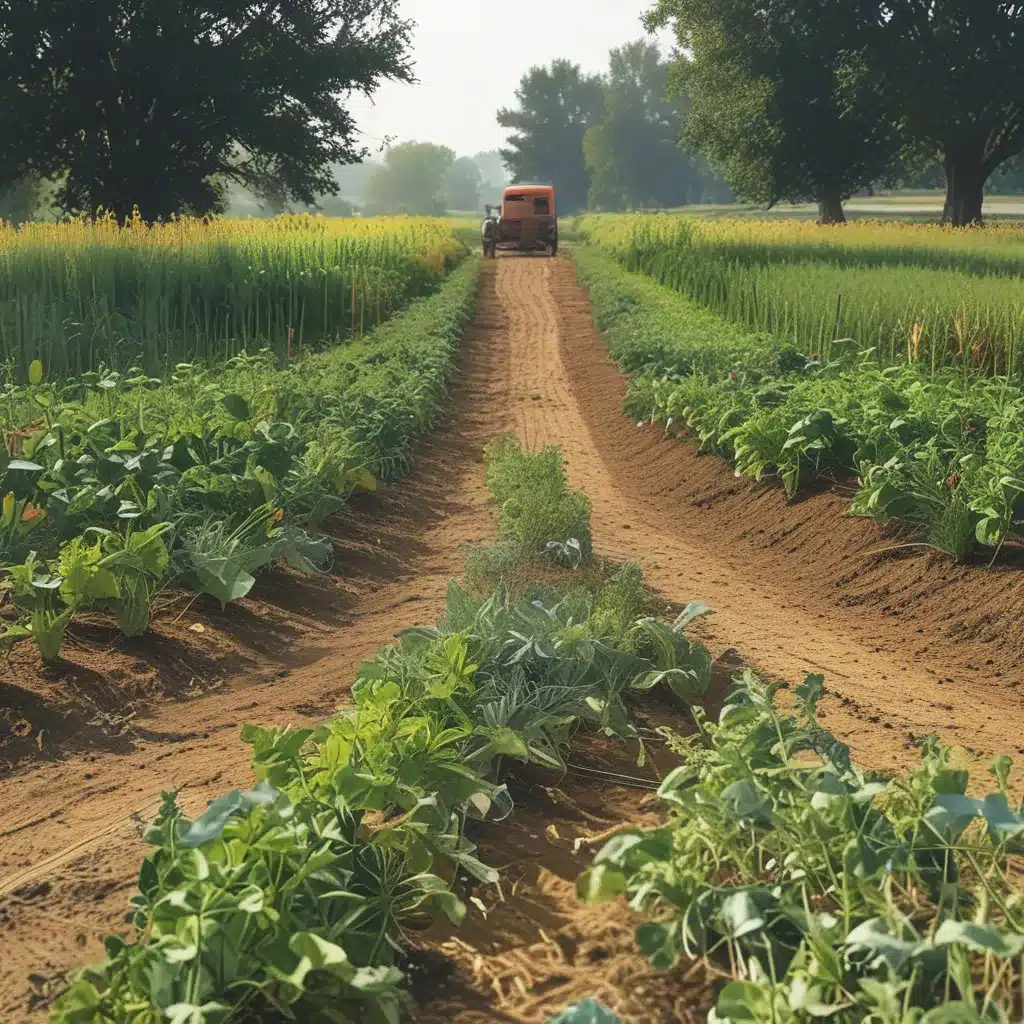
Sowing the Seeds of Success
As I step out into the lush, verdant expanse of our Thornapple CSA farm, the scent of freshly tilled earth and the gentle hum of pollinating bees fill the air. This is where the magic happens – where we harness the power of nature to nourish our community with an abundance of organic, nutrient-dense produce.
But cultivating this bountiful harvest is no easy feat. It requires a delicate balance of science, strategy, and a deep understanding of the unique ecosystem that is our farm. That’s why I’m excited to share with you the secrets to Maximizing Crop Yields in the CSA Model – a journey that has taken us years to refine, but one that has ultimately transformed our small plot of land into a veritable cornucopia of organic abundance.
Prioritizing Crops: The Art of Strategic Planning
At the heart of our success lies a meticulous crop planning process that begins long before the first seed is sown. We start by carefully evaluating our available resources – from the acreage of our fields to the number of hours our dedicated team can commit each week. This allows us to make informed decisions about which crops will give us the biggest bang for our proverbial buck.
As Pam Dawling of Growing for Market so aptly puts it, “Sometimes you have the time and space to grow everything you want. That’s wonderful. Other times, either land, labor, or both are in short supply. What to do?” For us, it’s all about striking the right balance.
We start by categorizing our crops based on a variety of factors, including their labor requirements, yield potential, and market demand. This helps us identify the true superstars – the crops that offer the highest returns on our investment of time and resources. Crops like kale, carrots, and sweet potatoes, for example, consistently rank high on our list due to their impressive yields, long growing seasons, and popularity among our CSA members.
But it’s not just about the numbers. We also consider the strategic importance of each crop, looking at factors like its role in crop rotation, its ability to thrive in our specific climate, and its nutritional value. After all, we’re not just growing for the sake of growing – we’re nurturing a diverse, resilient ecosystem that can sustain our community year-round.
Maximizing Yields: Embracing Innovative Techniques
Once we’ve identified our priority crops, the real work begins. We’ve discovered that by incorporating a few key techniques, we can consistently push the boundaries of what’s possible in terms of yield and productivity.
One of our go-to strategies is the use of high-density planting. By carefully spacing our crops and utilizing companion planting techniques, we’re able to pack more plants into each bed, resulting in a higher overall yield without sacrificing quality or flavor.
But it’s not just about cramming more in – it’s also about making the most of the space we have. We’ve experimented with a variety of vertical growing systems, from trellising our tomatoes to stacking our leafy greens. This not only maximizes our land usage but also helps to improve air circulation and reduce the risk of disease.
And speaking of disease, we’ve also discovered the power of cover cropping and no-till farming practices. By minimizing soil disturbance and replenishing our fields with nutrient-rich cover crops, we’re able to build healthier, more resilient soils that can better withstand the challenges of organic production.
Nurturing a Balanced Ecosystem
Of course, maximizing yields is only half the battle. We also need to ensure that the bounty we’re producing is of the highest possible quality, both for the health of our customers and the long-term sustainability of our farm.
That’s why we’ve placed a strong emphasis on creating a balanced, diverse ecosystem on our land. By encouraging the presence of beneficial insects, pollinators, and other wildlife, we’re able to reduce our reliance on harmful pesticides and herbicides, while also enhancing the overall resilience of our crops.
One of our favorite techniques is the strategic use of insect-attracting plants, such as flowering herbs and native wildflowers. These not only provide essential food and habitat for our pollinator friends, but they also help to draw in predatory insects that can help to keep pests in check.
We’ve also found great success in incorporating livestock into our system, using chickens and other animals to help with weed control, pest management, and nutrient cycling. It’s all about creating a closed-loop system where every element works in harmony to support the whole.
Reaping the Rewards of Abundance
As I walk through our lush, thriving fields, I can’t help but feel a deep sense of pride and gratitude. The hard work, the experimentation, the triumphs and failures – they’ve all come together to create this verdant tapestry of organic abundance.
But it’s not just about the numbers or the yields. It’s about the joy of seeing our CSA members light up as they unpack their weekly bounty, the satisfaction of knowing that we’re nourishing our community with the very best that nature has to offer.
And as we look to the future, we’re only just getting started. With each new growing season, we discover new ways to push the boundaries of what’s possible, whether it’s trialing innovative crop varieties or exploring the latest advancements in regenerative agriculture.
So, if you’re a fellow CSA farmer or aspiring grower, I encourage you to embrace the challenge, to experiment, and to never stop learning. Because when it comes to maximizing crop yields in the CSA model, the possibilities are truly endless.



